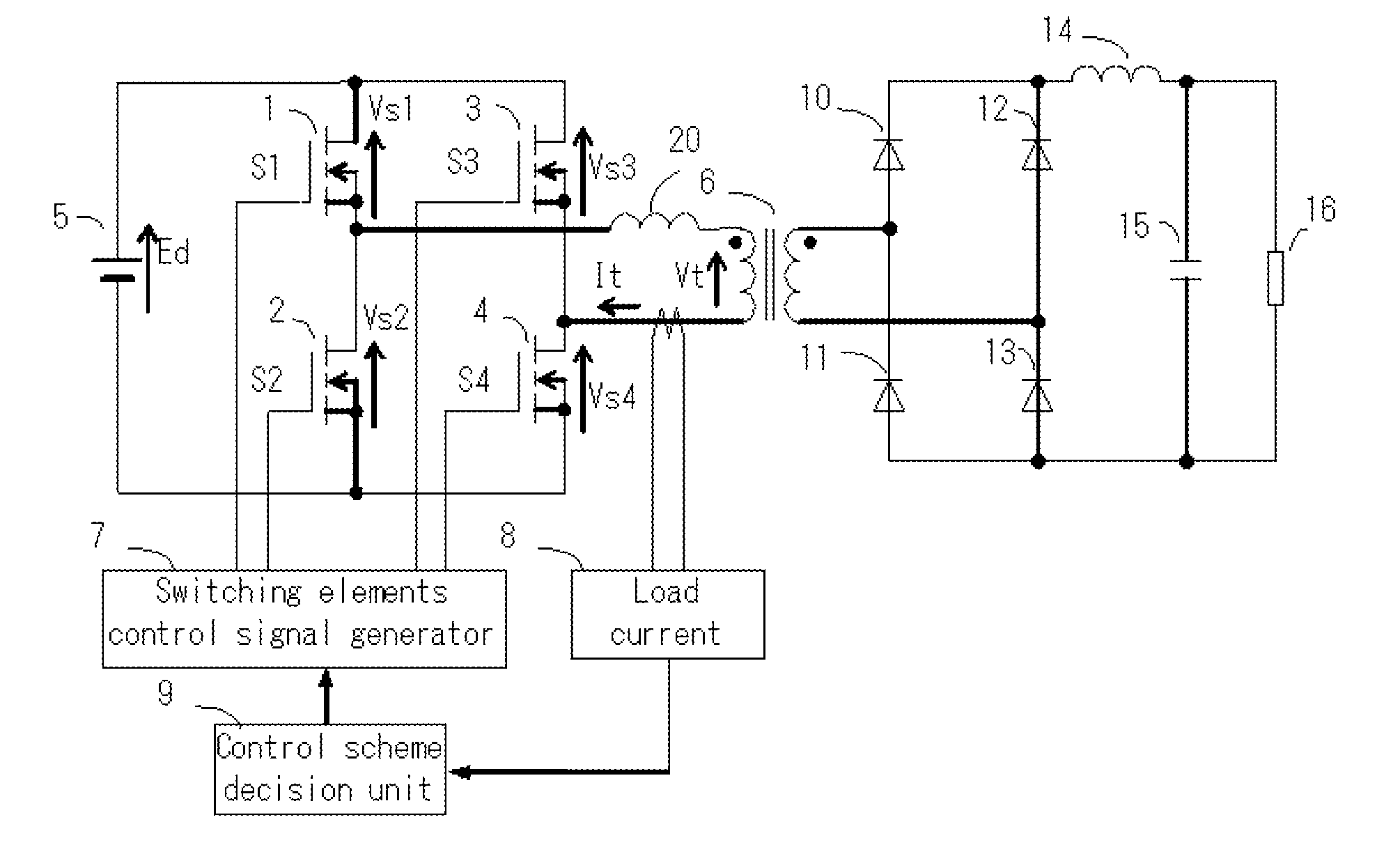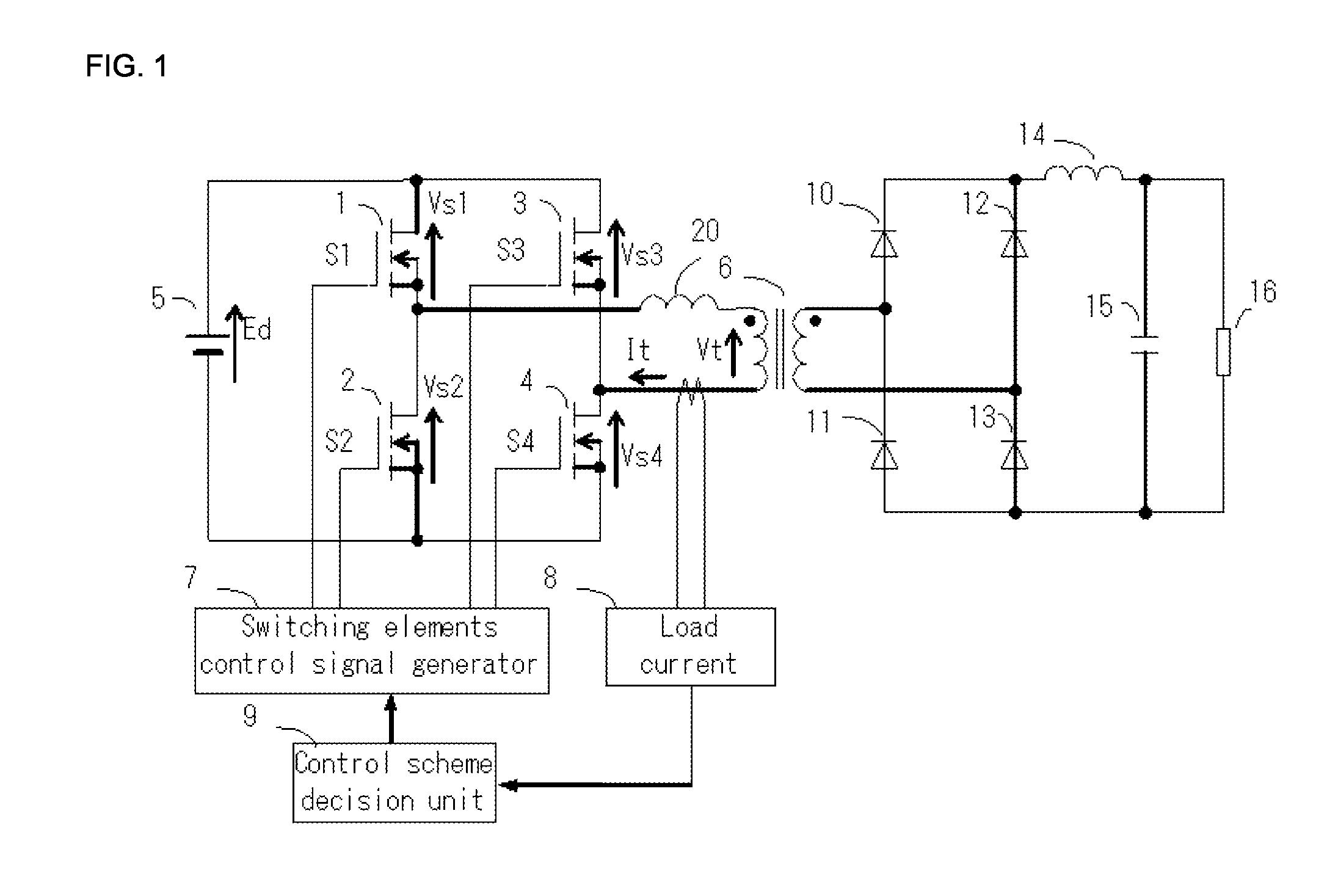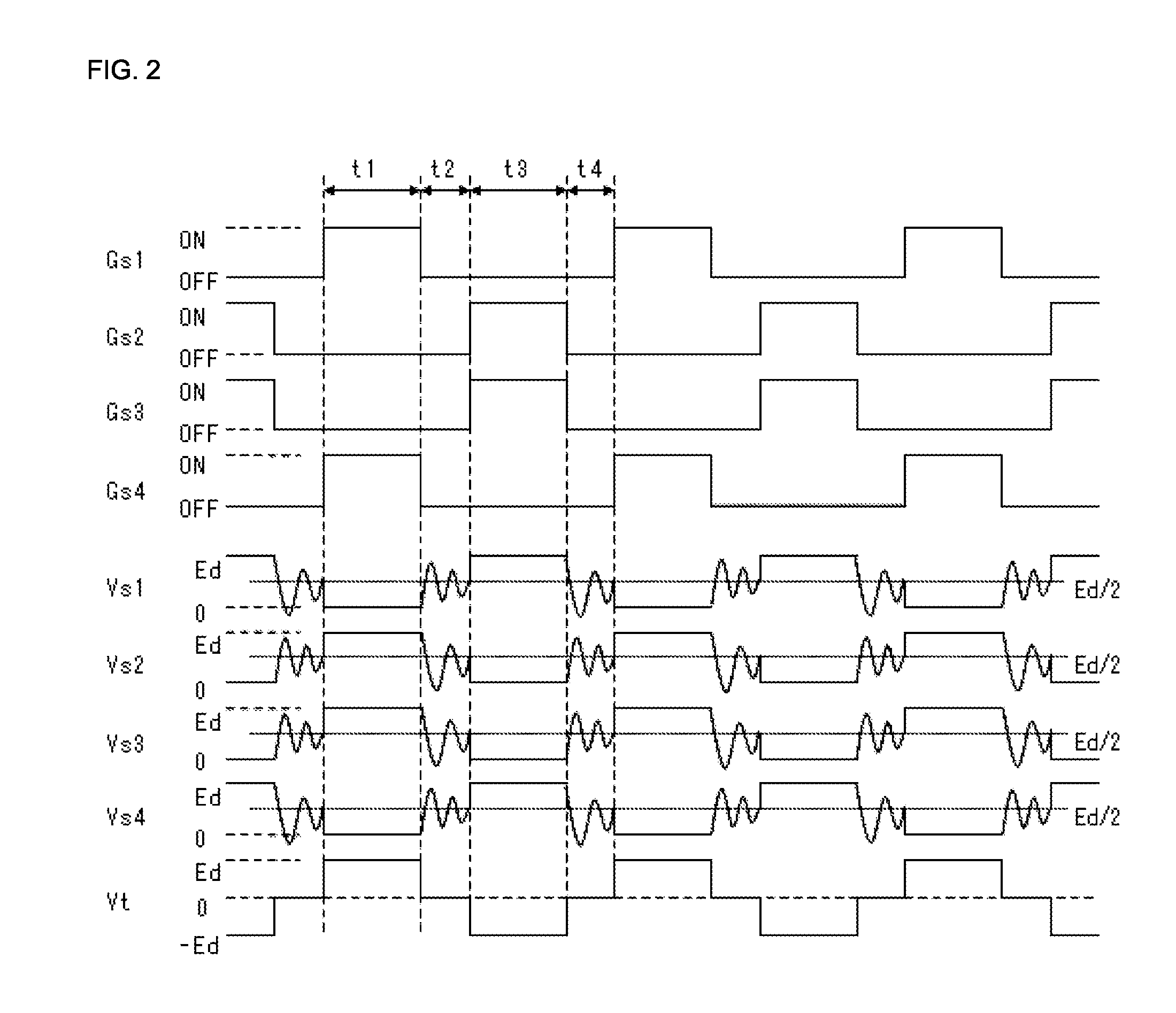Power converter and method for controlling power converter
a power converter and power converter technology, applied in the direction of electric variable regulation, process and machine control, instruments, etc., can solve the problems of reverse recovery, zvs is not possible in this control scheme, and the efficiency of the power converter is reduced, so as to avoid an increase in conduction loss, reduce loss, and large capacitance
- Summary
- Abstract
- Description
- Claims
- Application Information
AI Technical Summary
Benefits of technology
Problems solved by technology
Method used
Image
Examples
embodiment 1
[0051]FIG. 1 is a circuit diagram illustrating a first embodiment of the present invention, and FIG. 2 is a chart of waveforms at various points for illustrating the operation of the same circuit.
[0052]In FIG. 1, elements having the same function as those in FIG. 7 showing a conventional power converter are denoted by the same reference symbols, and explanations of those elements are omitted. The first embodiment of the present invention differs from the power converter of FIG. 7 in that it is provided with a switching device control signal generator 7A and a control scheme decision unit 9.
[0053]GS1 to Gs4 in FIG. 2 are the gate driving voltage waveforms for switching devices S1 to S4 shown in FIG. 1, Vs1 to VS4 are the drain-source voltage waveforms for switching devices S1 to S4, and Vt is a primary winding voltage waveform for the transformer 6.
[0054]The switching devices S1 to S4 are driven by gate signals generated by the switching device control signal generator 7A. As a resul...
embodiment 2
[0064]FIG. 3 is a chart of waveforms at various points for illustrating a second embodiment according to the present invention. The circuit configuration is the same as in FIG. 7.
[0065]FIG. 3 shows an embodiment in which the times t2 and t4 when all the switching devices are off was regulated, and the switching devices were set so as to turn on when the switching device voltage had approached a minimum value. For example, the on timing of switching device 2 is regulated so that the switching device 2 turns on when the voltage Vs2 has approached a minimum value. However, if the positive side and negative side voltage time products applied to the transformer are not equal, the transformer magnetizes and excess current flows, damaging the circuit device. Hence, the on timing of switching device 2 must be regulated with condition t1=t3 being satisfied.
[0066]Accordingly, the sum of time t2 and time t4 is set constant and the ratio between times t2 and t4 is regulated. For example, if the...
embodiment 3
[0071]FIG. 4 shows a chart of operation waveforms corresponding to claim 4. In this Embodiment 3, the switching frequency is regulated in such a way that a switching device turns on when the voltage of the switching device approaches a minimum value. For example, when the switching frequency is made high, each of the times t0 to t5 becomes short; conversely, when the switching frequency is made low, each of the times t0 to t5 becomes long. However, the resonance period of the switching device voltage at times t2 and t4 when the switching devices are off is determined by the circuit constant or the parasitic component, and is fixed. Therefore, by regulating the switching frequency, it is possible to regulate the turn-on timing in such a way that the switching device turns on when the switching device voltage approaches a minimum value. As a result, actions and effects similar to those in Embodiment 2 are achieved.
PUM
 Login to View More
Login to View More Abstract
Description
Claims
Application Information
 Login to View More
Login to View More - R&D
- Intellectual Property
- Life Sciences
- Materials
- Tech Scout
- Unparalleled Data Quality
- Higher Quality Content
- 60% Fewer Hallucinations
Browse by: Latest US Patents, China's latest patents, Technical Efficacy Thesaurus, Application Domain, Technology Topic, Popular Technical Reports.
© 2025 PatSnap. All rights reserved.Legal|Privacy policy|Modern Slavery Act Transparency Statement|Sitemap|About US| Contact US: help@patsnap.com



